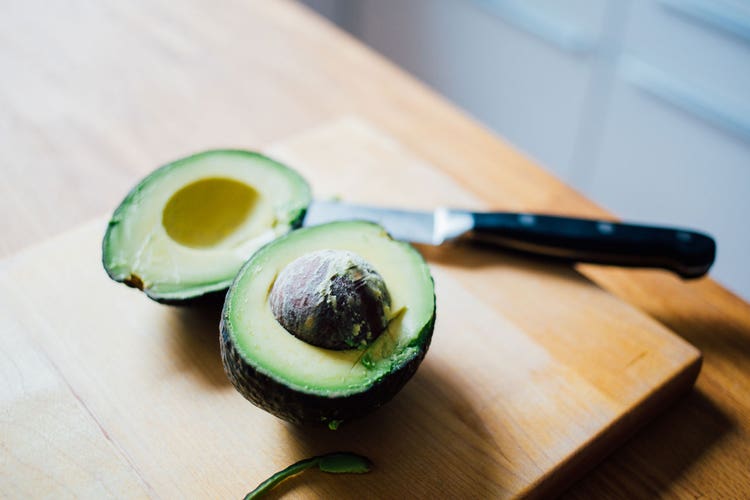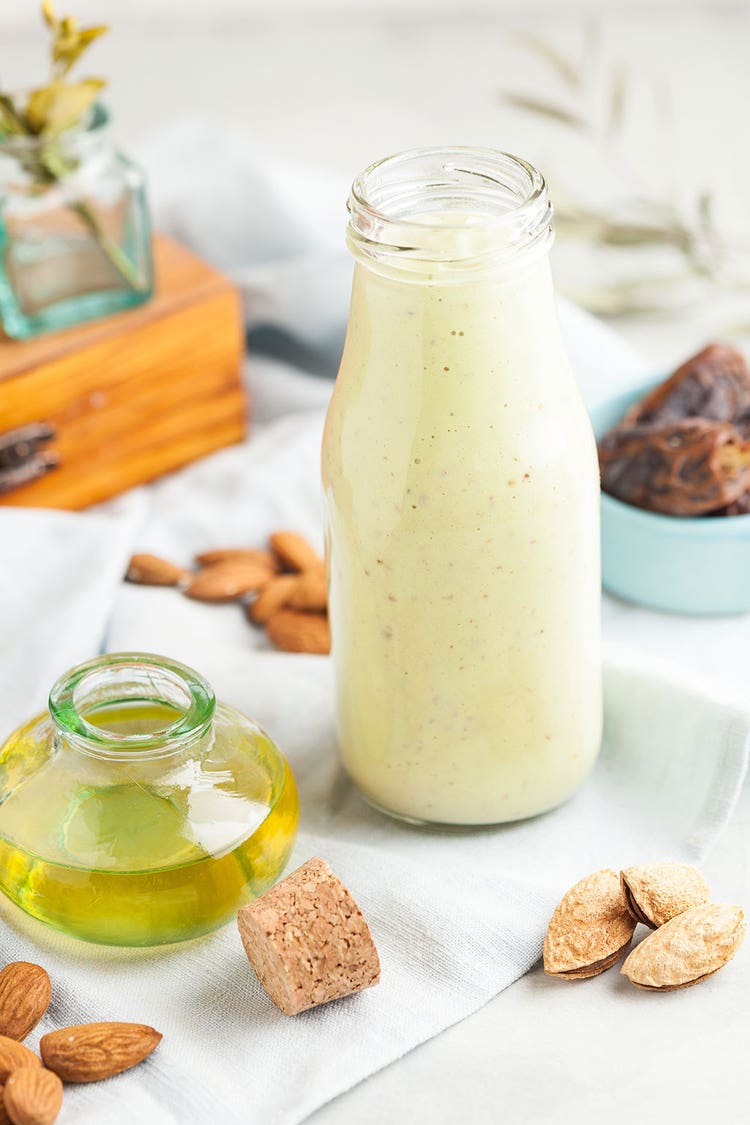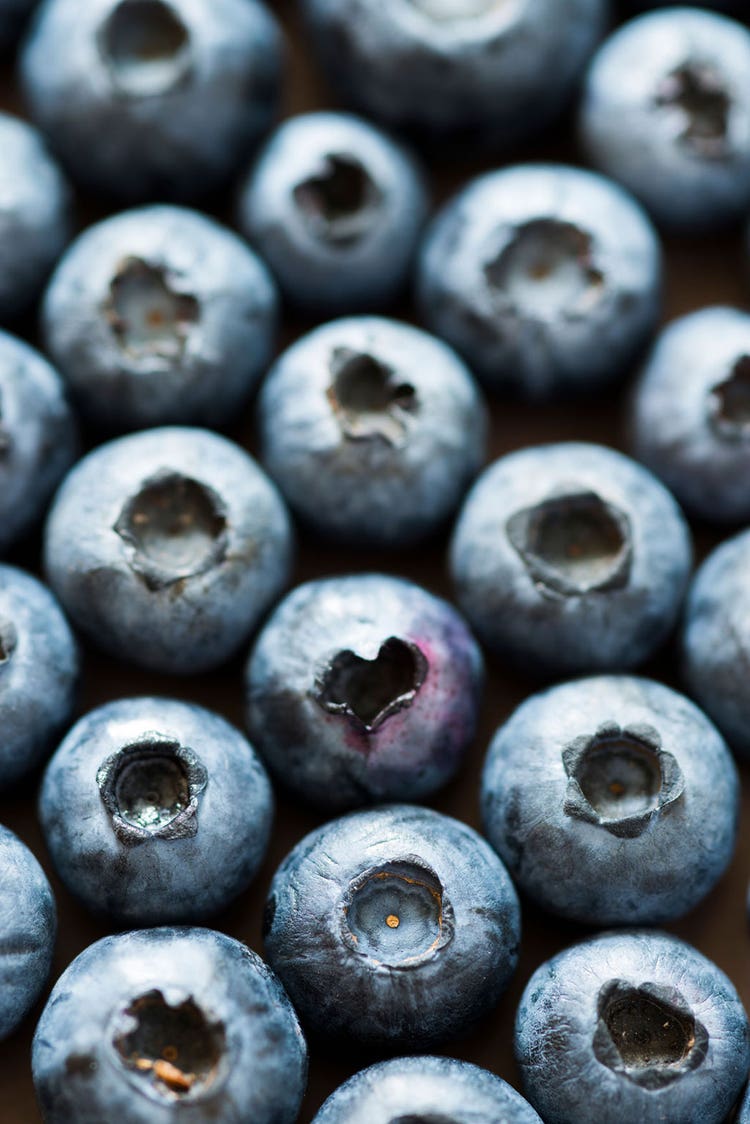Dr. Josh Axe Shares the Perfect Keto Protein Shake

Keto shakes are not your average smoothie. For example, they don’t contain any added sugar, dairy, fruit juice or even fresh fruit. While eliminating these foods from your diet for a period of time might be the opposite of what you’ve always been told to do, there’s solid scientific research backing the benefits of eating high-fat and low-carb.
To clear up any confusion: Whole foods like berries and grass-fed yogurt can normally be included in a balanced diet, but in the case of the ketogenic diet, these foods interfere with the end goal: getting into the metabolic state called nutritional ketosis and, as a result, producing ketone bodies.
When followed correctly, the ketogenic diet will force your body to metabolize fat as its primary source of energy rather than carbohydrates. The primary benefit of being in ketosis is that this leads to various metabolic improvements, reduced inflammation and often weight loss. Ketosis also can naturally suppress your appetite, making it easier to regulate your calorie intake and lead to improvements in energy and mental performance.
Which ingredients should be included in the perfect keto shake?

Like other keto recipes, keto protein shakes should include not only a moderate serving of protein but also plenty of fat. After all, the vast majority of your daily calories (75 percent or more) should come from fat while following the keto diet.
What makes the keto diet unique is that it’s not a high-protein eating plan. (It is a very high-fat, very low-carb diet). It includes moderate amounts of protein, the equivalent of about 20 percent of your daily calories. So while you might be encouraged to load up on protein powders, meat, eggs and dairy while on another low-carb diet such as Atkin’s, this is not the case when going keto.
Ideally, the “perfect keto shake” will include several servings of fat, a serving of protein and very little carbs. Keep in mind that eating keto doesn’t mean stuffing your face with any and all kinds of fat! Instead, it’s about mindfully choosing foods that are high in healthy fats and low in carbs.
Now let’s take a look at what a healthy keto shake might look like.
There are many types of protein powders available, depending on your palate and personal preference. Several types are low in carbs, high in fiber, vitamins and minerals, and have been linked to a wide range of health benefits such as lower cholesterol levels, better blood sugar control and improved skin health.
Here are tips for choosing a high-quality protein powder:
- For added electrolytes and trace minerals, try a protein powder made from bone broth or collagen. These will provide not only protein but also other nutrients that support joint health, digestion and more. Protein powder made from bone broth or collagen is packed with protein, low in carbs and low in sugar. You can get the benefits of slow-cooked bone broth easily by adding some to your favorite keto smoothie.
- Whey protein isolate is the best whey protein option if you have lactose intolerance because the lactose content is significantly decreased during processing. Whey protein is rich in branched-chain amino acids, which help promote muscle recovery and support muscle synthesis after exercise.
- Hemp protein powder is an easily digestible plant form of protein that stands out because it contains a hearty dose of omega-3 fatty acids and fiber.
- Pea protein is another plant protein that’s equally effective as whey protein at increasing muscle thickness when combined with resistance training. It also can increase levels of satiety hormones to keep you feeling full.
- Thanks to the high-fiber content of brown rice nutrition, it’s been shown to help regulate blood sugar levels and also may help cut cholesterol levels.
- Make sure that any protein powder you choose is unsweetened and low in carbs.
- Stick to a single serving (usually providing about 20 grams of protein), ideally right after working out, to maximize muscle gain and keep protein/carbs in check.
- Buy from a reputable retailer, and look for organic products with minimal ingredients and fillers to make sure you’re getting the best protein powders possible.
And here are other superfood ingredients to try adding to your keto shakes:
- Whole foods high in good fats — A filling keto shake/smoothie might be made with several fat-containing ingredients like coconut milk, avocado, almond butter, chia, hemp or flaxseeds, and coconut oil. Try adding 1 to 3 tablespoons nuts/seeds, 1 tablespoon oil and ¼ cup of your favorite milk alternative. Adding ½ frozen avocado and/or 1 tablespoon coconut oil will give your shake a delicious creamy texture.
- Deeply colored vegetables — Plant foods, especially non-starchy vegetables, provide important nutrients like vitamins, electrolytes, fiber and antioxidants. Think one to two handfuls of dark green leafy vegetables, such as spinach and kale, or if you’re brave enough, greens such as collard greens.
- Herbs and spices — These can help fight inflammation and boost your body’s ability to detoxify. Try adding cinnamon, basil, cilantro, parsley, etc. I also recommend consuming sour and bitter foods such as lemons, lime juice and tahini.
- No-sugar flavor boosters — You can improve the taste of keto shakes with low-carb ingredients like cocoa powder, cocoa nibs, unsweetened almond or coconut milk, vanilla extract, cinnamon, nutmeg and pure stevia extract for some natural “sweetness.”
- What about full-fat dairy? A small serving (up to ½ cup daily) of grass-fed certified organic dairy, including yogurt and kefir, can be consumed on the keto diet. Just make sure it’s unsweetened and doesn’t put you over the limit of your total carb intake that day.
Which ingredients should NOT be included in your keto shake?

The food you eat does more than simply provide micronutrients and macronutrients; it also has an important physiological impact. There’s no better example of this than when you’re on the keto diet, which can have a significant impact not only on your body and weight but also on your cognitive/mental health.
Of course, cutting carbs and increasing fat intake is crucial in order to have success on the keto diet—but your macronutrient intake is not all that counts. In order to fuel your body properly and feel your best on the keto diet, it’s important to cut out the biggest inflammation-causing foods in your diet, especially added sugar, refined grains, highly refined vegetable oils and processed meats.
Here are ingredients you’ll want to avoid adding to your keto shakes and smoothies:
- ALL added sugar — When it comes to cutting sugar, the keto diet takes things a step further than most other “clean-eating plans.” Even natural sweeteners like raw local honey, maple syrup, dates and fruit need to be avoided in order to keep carb consumption very low.
- Fruit and fruit juice (with the exception of about a ¼ cup berries per day).
- Poor-quality oils — No keto shake is complete without a good dose of healthy fats, but not all fat is created equal. In general, you want to avoid processed nuts/nut butters and soybean, sunflower, safflower, cottonseed and corn oil. Instead, focus on high-quality coconut oil, olive oil, MCT oil, avocado oil, ghee and grass-fed butter.
- Sweetened dairy products and milks — Check ingredient labels carefully, and be sure to avoid any products with fruit juice, agave, honey, cane sugar, pectin, etc.
When’s the best time to have a keto shake—before or after a workout?

Having a keto shake following a workout is a good idea, but keep in mind that if you’re new to the keto diet, now’s not the time to really amp up your workouts and shoot for personal records. (Give yourself several weeks on the diet to adjust first.)
Consider having a keto shake after a workout, for lunch, as an afternoon mini-meal, if needed, or even as a light dinner. You might try training on an empty stomach and then following up your workout with a ketogenic shake. This may improve the results you see on the keto diet and aid in faster weight loss. Although, it’s important to point out that fasted workouts aren’t for everyone and can possibly reduce your intensity and energy.
You may want to think about avoiding shakes in the morning and skipping breakfast all together because of the positive effects that intermittent fasting can have. A common approach to intermittent fasting is shifting the timing of your meals so you eat within an eight-hour window each day and fast for 16 hours or so.
Intermittent fasting and the keto diet are often practiced together because they have many of the same benefits, such as being effective tools for weight loss and blood sugar regulation. The keto diet also can suppress your appetite, so skipping breakfast and enjoying your shake later on becomes much easier.
Video credit: Alex Arsique, Shutterstock
Photo credit: Charles Deluvio, Unsplash; Mariana Medvedeva, Unsplash; Alexey Kuzma, Stocksy; Leandro Crespi, Stocksy